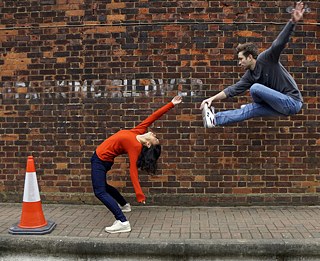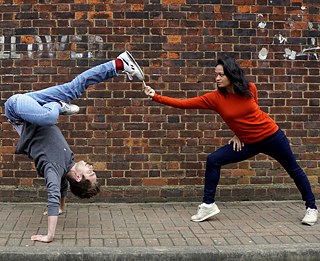Joy Alpuerto Ritter & Lukas Steltner
Heimkehr
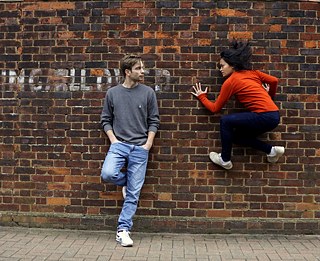
The celebrated Berlin-based dancer and choreographer Joy Alpuerto Ritter has been selected for the annual Goethe-Institut Montréal/Circuit-Est centre chorégraphique two-month choreographic residency, beginning in September 2019.
By Philip Szporer
Especially with the mix of my educational background combining ballet, contemporary dance and urban dance, it is an exciting exploration to find a unique language that defines my style.
Joy Alpuerto Ritter
Joy, you were born in Los Angeles, but have lived in Europe for most of your life. What are the biggest differences you notice between North American culture and European (specifically German) culture?
I was born in LA and moved to Germany with my mom when I was 5 years old. I grew up in Freiburg im Breisgau, and have been living in Germany for 31 years. I mostly have been working here as a freelancer
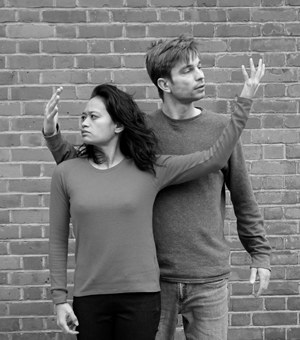
I feel that in the USA the commercial scene is much more dominant than theatre art and most people seem to be more attuned to the art of entertainment. The country has influenced the world with Urban Dance from the underground scene, such as Voguing, Hip Hop and Breaking, and that is also a culture that has been a strong influence in my development. On a daily base, I experience that North Americans seem to be much more communicative, they enjoy small talk, and that being polite is an important value in daily interactions. In comparison Germans may sound rude and much more direct. It's hard to say what I prefer, but I know that I was able to become the dancer and artist that I am because I've chosen to stay in Europe and not go back to the USA in 2004 when my mom did. I think it was the right decision, but it has also been a sacrifice to be far away from the family. Later on I was able to tour widely with the Cirque du Soleil’s Michael Jackson Immortal World arena show for almost two years (through the USA, Canada and Europe), and I loved it and it felt right at that time.
Joy, you are well-known as a dancer, but what is it about being a choreographer that attracts you?
I like to create and develop my own voice and movement aesthetic and share perspectives and images that are in my mind. Especially with the mix of my educational background combining ballet, contemporary dance and urban dance, it is an exciting exploration to find a unique language that defines my style. (Since 2005 she has been passionately practicing different styles like hip hop, breakdance and voguing.) Moving people and make them enjoy, think, feel and sense more intensively during a performance is what attracts me. It is a scary but also great challenge to suddenly have more responsibility and control as a choreographer.
So is that how you would now describe yourself today?
I'm a dancer and a choreographer. Which are two totally different things for me. The biggest challenge is to be good in both. As a dancer I have already gone through paths of failure, success, confusion, loss, pain and love in many ways. I think you'll never stop learning but I can say that I have a big amount of experience as a dancer. This is quite helpful while emerging to become a choreographer, but it is a totally different role and a challenge that I always wanted to try and explore. I'm still defining a confident voice as a choreographer and I hope people are able to hear me and understand my language.
Lukas, could you introduce yourself briefly?
I'm 31 years old, and I live in Berlin. I have a dance background in bboying/breakdance. Furthermore I love to explore different movement concepts inspired by contemporary dance, new style hip hop and popping. Besides that, I’m an actor. Professionally it kind of drew me into a field where I combined these two art forms on stage. I’m at a point in my career now where I’m really curious about creating our own work, especially exploring the possibilities of bboying in a dance theater context as well as finding a way to balance movement and language at the same time.
There are many ways to tell a story
Joy, you have worked with a number of choreographers over the last years and you mention that their approaches to “scenes and movements” have inspired you. Can you be more specific about how you have adopted or altered some of these practices?Improvisation is a great and useful tool to create movement material and scenes. But it must be practiced like a technique. Some of my mentors have been helping me improve my sensibility of improvisation and finding the freedom and responsibility to carry a scene on my own just with these improvisational tasks. With this experience I have become very confident and playful in improvisation. There are so many ways of approaching the embodiment of an emotional state for a scene. For instance, you start with recreating the feeling of that specific emotion and let it just happen in the body naturally. Then, you create technical movement material that could embody the emotion. And finally, the movement vocabulary is telling a different story than the emotional feeling, which creates a totally different tension. Working with movement concepts limits and forces you to find a certain quality in order to express a certain state. The music of a scene influences movement and emotions. I like working with soundscapes to give the body and the mind space to interpret. Like rhythm patterns and groovy beats with strong base that give me weight and musicality to move onto. Classical music may also be a good choice especially for this piece as it has so many layers of emotions, complexity and history. There are many ways to tell a story, it could be in a very abstract way or in a very literal way. It's the decision of the choreographer how he/she wants to express and tell a story. I like to use these approaches and see which is best for which scene and project.
I read, with pleasure, your proposal for the residency. Can you both talk about how the circumstance of war impacted your families? You each refer to their experiences in World War 2, which is a long time ago. Did the experiences of your relatives have a deep impact on the way you grew up, or influence the ways in which you were raised?
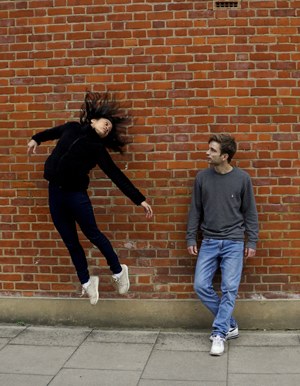
My family had to flee when the Red Army conquered the Prussian territories. The experiences of these chaotic months formed my grandparents. And I’m convinced that my mother also inherited certain behaviours influenced by that experience. When the so-called ‘refugee crisis’ began in 2015 and right-wing opinions began to circulate, my grandmother said something like, “They should stop blaming all those poor people. We have all once been refugees.”
Joy: My grandparents from my mother’s side moved away from the Philippines with six children to the USA to provide a better life for their family. They never went back. I actually didn't directly feel an impact of their experiences from war growing up. Also, I was mostly raised in Germany with my mom and German stepfather. Later on, when I went to the Philippines for the first time, I found out much more about my family history from World War 2. My grandfather from my father’s side was separated from his mother and was searching for her for half of his lifetime. When his wife and children wanted to immigrate to the USA, he couldn't leave before he found his mother and stayed. This had a deep impact on my own father. In my case, the subject of separation is the main point in my family history that I want to discover and ask questions about. The struggle for a better life made the former generation strong and their belief to move on and stay positive is a typical characteristic that they passed on to the next generation.
It seems clear that you are both drawn to your compelling personal recollections of family history. Tell me, why do you want to research this facet of your past?
Joy: We are aware that our grandparents will no longer be able to share their stories for long. So before it's too late, we want to find out as much as we can about our family history and to understand their behaviour and value their stories. Especially because they have lived such different phases of life that we can't even imagine.
Lukas: When my grandmother got sick, in the last years before she passed away in early 2018, she started to investigate my grandfather’s and her own history. Of course she did her research the way she knew best – out of her memories, from old photographs, she drew an family tree reaching as far back as she could get information. I think she wanted to make sure that we, as her grandchildren, don’t forget where we come from. Maybe she wanted to help understand history and how it shapes people. I think for German families, the Second World War is still a formative event, even though it is so far back in the past that some people don’t want to hear about it anymore. One fact that actually made me want to explore our topic of Heimkehr (Coming Home) is a story my grandmother told us. When she was a kid, at the age of six or seven, her father came back home after years of war imprisonment in Siberia. All she could remember until then was that my grandmother grew up without a father. When he walked through the door at their house, she and her sisters hid under a table, because they were afraid of the foreign man in their home. It’s hard to imagine what her mother felt when her husband came home, after so much time, not even knowing if he was alive.
War and separation is an universal topic
Your stories are culturally so different, yet the theme war and separation is universal. How do you envision drawing this narrative (war separating families, reuniting, escape, etc.) for audiences? How do you transform emotional states into performative material?Lukas: When we sat together in the Philippines with Joy’s father and great-uncle we spoke about her family history and ended up speaking about World War 2. For us, used to a German/European perspective, this was an "aha" moment. While at the end of the world, we talked about the same event that formed our families and understood why it's called a World War.
War and separation is an universal topic. In the end it affects people and their relationship to each other. We want to extract the substrate of the associated side effects, and show the impact of where it hits the most: in the lives of real people. Dance and language are both strong expressive tools. We want to find out where words are needed and where we can embody the emotions formed by events such as separation, alienation, fear or mistrust.
Disciplines merge and cross-pollinate, and certainly finding new artistic avenues of expression requires exploration and experimentation, and that means never quite knowing what comes next. How do you both approach this collaboration?
First of all, this residency is a great opportunity for both of us to get to know each other better as artists and in the process of creating. Our approach starts with communication. We collect ideas of scenes and pictures we have in our minds, talk about movement concepts that we want to explore as well as content we want to show in the piece. That would happen mainly before we enter the rehearsal space. Second, we go into the studio and try out these ideas. We are both very different dancers and we are aware of the strengths of our own dance style and want to find a communication between these languages. Therefore we try to stay open-minded to balance both - things we planned and imagined already and also new ideas that come up during improvisation and in the process. We trust each other’s intuition.
It seems that one essential aspect of the project is about cultivating empathy. Talk about that idea.
Well, empathy is an essential part of understanding each other, and finally for making a liveable everyday life. We believe that theater, as a magnifying glass for relationships or emotions, can help to change perspectives and awareness. Especially it can help to point out universal values, or transfer context from the past into present.
Connecting with identity seems to be another large theme within the project. In other words, the question of “who am I” seems central. Please talk about this perspective and how it may or may not connect to the project.
We believe that human beings are formed by their history. Even if you try to ignore your past, that struggle is influenced by what happened to you or your ancestors. Connected with our project it is an interesting perspective to not only “picture” history, but also deal with the question of how it affected our (Joy and Lukas) lives.
Do you have any expectations leading into this residency?
Besides having a great time in Montréal, we want to say thanks for the great opportunity the residency provides us. We are hoping to get as close as possible to our aim of creating an evening-length piece.
Joy, you have lived and worked in Montreal before. Why are you attracted to the city? And what is it about the artistic community that stimulates you?
I love the mix of the European French-speaking culture mixed with the North American vibe. The people all seem very honest, friendly and peaceful. I've worked in the Cirque du Soleil in Montreal (on the Michael Jackson Immortal World Tour) and was able to collaborate with Milan Gervais, a Montreal-based choreographer, on an outdoor performance. I was also part of an exchange project with Christoph Winkler, and then came back with the Akram Khan Company with our touring show Until the Lions (for which she was nominated as Outstanding Female Dancer (contemporary) at the UK National Dance Awards in 2017).
It was the first time I saw Crystal Pite's and La La La Human Steps’ work and that blew me away. I've met artists with different backgrounds from the urban and contemporary dance scene and some have become good friends. I have great memories of the outdoor festivals in the streets of Montréal, exhibitions, nature and party events. I enjoy the open-minded perspectives of artists and appreciate the exploration of fusion urban dance, circus and contemporary dance to the next level.
Lukas, apart from this residency opportunity, why are you drawn to the city?
This will be my second time in Montreal. I was visiting Joy for a week or so while she was performing Until the Lions at the Tohu. It was March and I saw snow as never before. So I'm very curious about the underground city. I'm looking forward to discover more of the vibrant Urban Dance scene, which is thrilling to me. Besides those possibilities, I hope to get a glance into the Montréal art scene.
